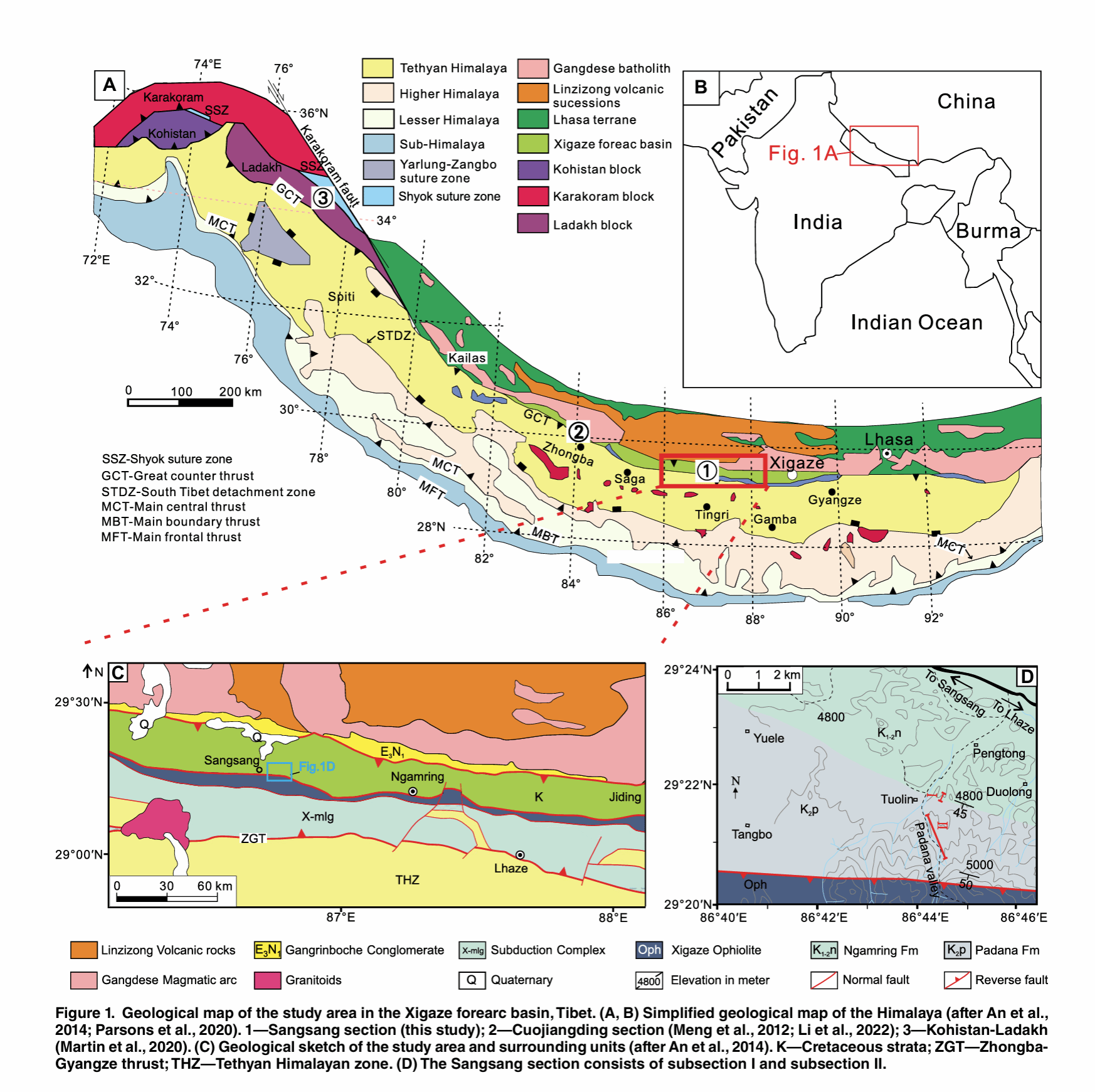A research team from the School of Earth Sciences and Engineering, Institute of Continental Geodynamics, Nanjing University in collaboration with researchers from Utrecht University, The Netherlands and Northwest University, China publihshed an article on Geology.
The article information:
Xu, S., Li, Y-X.*, van Hinsbergen, D. J., Liu, X.Y., Li, B.C., Li, X.H., Wang, T., 2025, An asymmetric Late Cretaceous back-arc basin south of Tibet?
Abstract: The Indus-Yarlung suture zone (southern Tibet) between the Indian plate?derived Tibetan Himalaya and the Asian continental crust intruded by the Gangdese magmatic arc of southern Tibet hosts a <20-km-wide band of ophiolites overlain by Asia-derived clastic sedimentary rocks of the Xigaze forearc basin. How wide this basin was prior to India-Asia collision is unknown: it may have been a typical forearc basin width, i.e., ~150?200 km, but was also proposed to have become separated from Tibet in the Late Cretaceous by a back-arc basin thousands of kilometers wide. To test this, we present the first paleomagnetic study of upper Cretaceous redbeds of the 71.2?69.3 Ma Padana Formation in the Xigaze forearc basin, near Sangsang town, Ngamring county, Tibet, China (~86°E). High-temperature magnetic components were isolated at 580 °C or 600?680 °C and passed reversal and fold tests demonstrating a primary magnetization that we corrected for inclination shallowing. Our results reveal that the Xigaze forearc basin at ~86°E was situated at 18.4° ± 3.6°N at ca. 70 Ma, indicating a separation from Lhasa of <500 km. To reconcile our new data with coeval, much lower, paleolatitudes from the Ladakh arc to the west (~77°E) we reconstruct a Late Cretaceous?Paleogene opening and closure of an asymmetric back-arc basin in the western Neotethys. This suggests that the distribution of India-Asia convergence was laterally unevenly partitioned over the pre-collisional plate boundaries.

Source: An asymmetric Late Cretaceous back-arc basin south of Tibet? | Geology | GeoScienceWorld
